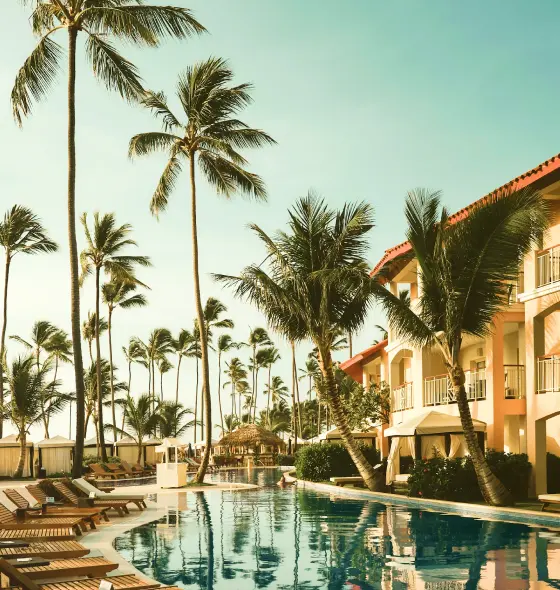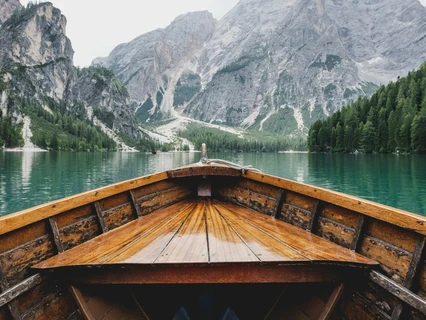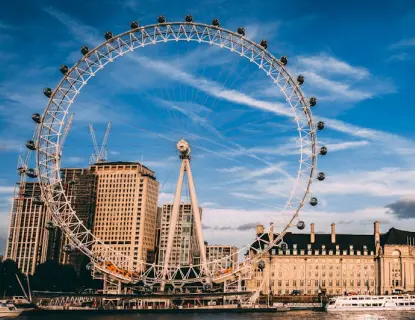Hidden Worlds Under Stockholm
A journey through the artwork in the subway system helped me journey through other realities.
Deep down below the surface, the Swedish capital Stockholm offers up a cultural attraction that is truly unique. It’s known as the longest art gallery in the world and boasts 110 km of art across nearly 100 metro stations spread across the city.
Stockholm is built on an archipelago, with over fifty islands crisscrossed by bridges and waterways. The islands themselves are granite and gneiss, which often poke their forested heads out of the water showing their dark, shining cliff faces.
So when the city’s subterranean metro system was built in the second half of the 20th century, it necessitated the creation of stations deep underground with dark, cavernous walls — the so-called ‘cave stations’.
On a cold Friday evening at the end of a busy week of work travel, I found myself with a few hours to kill in the Swedish capital. So, armed with a digital guide and a sense of eager anticipation, I plotted a course through several metro stations on the Blue Line.
I’d been promised that each station’s art and theming was unique. I was told that every station is someone’s favourite station. What I found was that each station’s art usually relates to…
I began my self-guided tour at the largest station in the city.
T-Centralen — Images Frozen in Time

Starting at T-Centralen station, though, may have been a mistake. Navigating the largest station in Stockholm during Friday rush hour was not easy. As I entered the Blue Line area, hundreds of people milled through like ants, rushing back home to start the weekend. I was pretty sure I was the only ‘tourist’, with everyone else seemingly unaware of the artwork through which they were crawling.
T-Centralen’s artwork is a great representative of the Blue Line as the walls of the cave in which the station sits boast a blue and white hue throughout. Apparently designed to counter the hustle, bustle and stress of a large station, this station’s walls are adorned with leaf and fern motifs, but some sections also show several images of workers and work equipment like ladders, tools and scaffolding.


Now, to me, this doesn’t whisper serenity. What it does do is create a somewhat spooky ambience where the images of people from the past — people who built this station — are forever etched in its walls.
The story goes that the artist wanted to add the names of the workers but was dissuaded from this as it might seem more like a memorial or a tombstone. But what we are left with is more like a fossil frozen in time, living in the walls of the mountain itself.
Though I liked the station, I wanted to get away from the crowds that flowed in and out every couple of minutes with the arrival and departure of the frequent trains. So I hopped to the next station in my tour.
Kungsträdgården— An Artistic Recreation of a Time

The deepest station in Stockholm, the ‘King’s Garden’ station sits below the actual King’s Garden. To understand this station you first need to know that there once was a palace in the King’s Garden which burned down after a fire in 1825. This also triggered a change in the design of the garden itself.
In the station, the artist wanted to create a garden inspired by the one above — but not the one that existed at the time — but rather one from the past. The colour and the design of the station are baroque, as the garden above once was. Today the garden is an open space lined with gorgeous trees and beautiful buildings, which are now retail and commercial spaces.
So, the station is an artistic reimagining of a place that once existed but now no longer does. The artist added statues from the palace all around the platform level, perhaps to make the commuter feel like they are walking through a garden or palace as they travel to and from this central area of Stockholm.


I interpreted this station as an alternate version of the garden that people are about to go out and see or the one they’ve just seen. Past and present mix, and being a garden, they are held together by the common element of nature.
The exposed, unpainted rock of the station walls might not be everyone’s cup of tea, but as I reached out an ungloved hand to touch it, I could almost feel the throb of the incoming train on the cold damp wall. A real connection with the ‘real world’.


Along a few sections, moss had begun to grow. This moss disappeared from the city above around the same time as the palace burned down and the baroque gardens were dismantled, making the station the perfect time capsule for the 1820s Kungsträdgården.
Leaning into this idea of the station being a relic of the past, in later years murals have been added that reflect on issues that local people at the time were concerned about. These include murals about nuclear fallout which were painted in the wake of Chernobyl, actual oil spills created on the floor reflecting oil spills in the real world during the 1970s, and a preserved stump of an elm tree, placed in the station to remind people of the protests against the cutting of these trees in the King’s Garden above.

It is a great window into what people worried about back then, which is still closely linked to issues today. Concerns about Russia, oil and deforestation are, in 2024, still key trigger points for the population.
After this sprawling station with so many different themes, I was ready for something a bit calmer. And the next station delivered.
Rådhuset – A World Far Away But Incredibly Real

This is the most cavey of the cave stations. The pinkish-brown hue makes you feel like you are on another planet. This station probably connected with me because my living room is almost the same colour and texture as its walls. You always have a type!
Rådhuset station has been designed with items ‘sunk’ into the cave walls. It was interesting to see arches, tree trunks, wicker baskets and galoshes protruding out of the walls — all designed to remind you how deep underground you are but also to create a connection between this world and the world above. The simplicity and minimalism of the art in this station actually conveyed more calmness to me than the chaotic blue designs at T-Centralen.




In the three stations thus far, the art and the canvas mingled quite a bit. The artists at each of these stations used the spectacular canvas of the cave to immerse people in very specific unique worlds. The next two stations I visited offered something totally different.
Stadshagen — It’s All a Matter of Perspective

Stadshagen station sits below an aging sports center, and that’s the inspiration for individual works of art dotted around the platforms. They represent different sports in colourful, action-packed paintings. What made them unique for me was that they represented different situations or different outcomes of the same event.
There is a football game, for example, where if you look at it one way one team is scoring, but when you walk a bit further down the platform and look at it the other way, the other team is in the ascendancy.



Another piece shows uphill skiing from one angle, downhill from the other, and an empty slope on the third. To me this is a great way to remind people who walk past these images everyday that there’s always another side to the story, another opinion to consider and that empathy is important.
Having reached that epiphany, it was time to move on to the final station on my route.
Solna Centrum — A Reminder of What We Must Stand For

The brightest and boldest of the stations I visited sits below a shopping mall. This station for me has the strongest message of environmental conservation, which directly contrasts the symbol of capitalism at surface level.
The bright red and green bands represent the earth and the sky and the images that bloom across the length of the platforms are vignettes of social issues important in the 1970s. I saw images of industrialisation, pollution, deforestation, urbanization and the loss of our connection with nature.




Small models of city and village tableaus pop out behind glass cases. These are 3D images of typical Swedish scenes but interspersed with buildings, bulldozers and elk. The artists seem to be making people rushing to or from the shopping mall to confront these scenes, perhaps hoping to trigger something in the back of their minds.




I found this station to be the most accessible in terms of imagery and it’s interpretation. Its themes are the most universal, but also somehow extremely local. The bold yet simple colour palette reminded me of murals I have seen on walls in places like Japan, Vietnam and India.
Just before I boarded my train to go back I saw what may be my favourite image. In a small corner of the cave wall was an image of a man looking for elk. The elk however, is right behind him, waiting for him to turn. It shows our loss of connection with nature in a humorous way and how that might actually endanger us. It certainly reminded me of how clueless I am in the woods!

Art in and around subways or metro stations can be seen across the world — from the poems on the London Underground to the beautiful entrance gates in Paris, the Delft Blauw paintings at Amsterdam Centraal and the art in Sannomiya Station in Kobe, just to name a few.

These artistic expressions transform otherwise dreary, confined public spaces, usually filled with busy, stressed humans, into places that are works of art themselves, and that tell a culturally relevant story.
In Stockholm, just like the five stations I visited, there are over 80 more stations to visit with themes as wide-ranging as Peace, Diversity and Super Mario. And all this for the price of a metro ticket! How could you go wrong?









